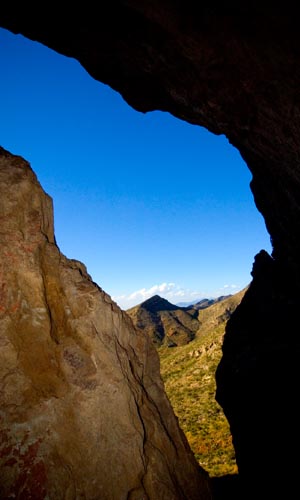Activity / How-To
Picture This

By Earl Nottingham
Our Chief Photographer Shares His Insights.
Follow the rule of thirds as you compose your photographs by positioning the most important subjects in the image at or near the intersection of the lines that divide the image into thirds, both vertically and horizontally.
For generations, artists and photographers have used their skills to create a scene that not only invites the viewers attention, but captivates and directs the eye throughout the image. Paintings created centuries ago still inspire slack-jawed awe in modern-day museum-goers, a testament to the magnetic, almost hypnotic force that draws and holds the viewer at the painters will. This energy is usually the product of a masterful use of composition: The knowledge of how to arrange the visual elements in an image to tell a story. And regardless of subject or setting, any image can be energized by a well-executed use of composition.
One of the basics of photographic composition is actually thousands of years old. The rule of thirds is based on a Greek formula used in architecture as well as artwork that creates an asymmetrical balance of elements in the work. For the photographer, it consists of visualizing a scene roughly divided into thirds, much like a tic-tac-toe pattern. By placing the subject or focal point at one of the intersections created by the lines, a scene takes on a more dynamic feel, allowing space for the eye to wander within the composition. Conversely, a subject placed dead center in the frame appears static and somewhat boring. Horizons, for instance, become more exciting when placed along either the top third line or the bottom third line. If you have a great sky to work with, give it the top two-thirds of the frame. If shooting wildflowers, the sky might only take up one-third. If people or animals are the subject, they are usually placed on the side that will allow them to be looking into the frame, not out of it. However, for the sake of creativity and individuality, remember that great photos can be made by breaking the rules. You may want to consider dividing the frame into sevenths, or (hey, go for it!) elevenths.
Another way to add energy to your composition is to add naturally occurring diagonal lines whenever possible. Diagonal lines are dynamic in that they create visual tension, pulling the eye into or out of the frame. By contrast, horizontal lines are static and convey a restful feel. Diagonals can be rivers, tree branches, street curbs, fences, reclining people anything that isnt completely horizontal or vertical. Diagonals that enter from the left side of the frame will easily pull the viewers eye into the photo, since we tend to read from left to right. Rivers or creeks will appear to flow easily from this direction. Diagonals entering from the right side fight our natural left-to-right tendency and add tension to the image. Many times you can create a diagonal from a vertical or horizontal line just by tilting the camera slightly. This is a useful technique in wildflower photography to spice up vertical stems on single flowers or with people to give them an appearance of movement.
Finally, a tripod is a useful learning tool when concentrating on the rule of thirds and diagonals in your cameras viewfinder. Stabilizing the camera allows you to see the big differences in composition resulting from minute corrections in camera position.
Now get out there and compose yourself!
———This article appeared in the June 2006 issue of Texas Parks & Wildlife. If you’d like to read more articles like this or subscribe to the magazine, visit www.tpwmagazine.com.
 Texas Parks and Wildlife Department, 4200 Smith School Road, Austin, TX 78744
Texas Parks and Wildlife Department, 4200 Smith School Road, Austin, TX 78744


